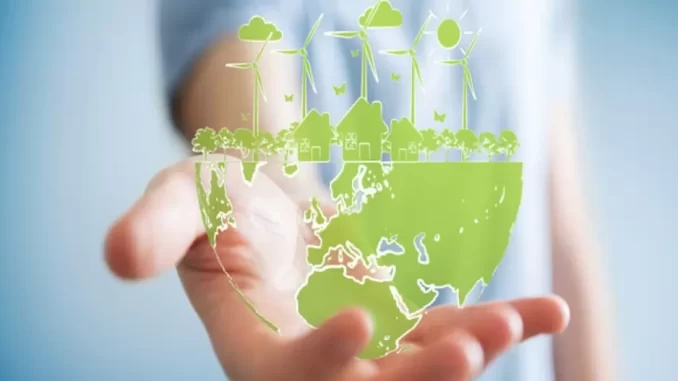
Avoiding the worst impacts of climate change will require a comprehensive response that includes public and private financing that aligns with climate goals.
Lemoine 2021 shows that accounting for model uncertainty raises this discount rate and thus should be discounted accordingly. Investments designed to prevent climate damage tend to offer returns with high marginal utility, necessitating an elevated discount rate. Lemoine (2021) further illustrates this point by showing how accounting for this model uncertainty raises this rate of discounting.
Adaptation
Every country and community will need to adjust to climate change by building storm-resistant housing, planting drought-tolerant crops and installing reliable water networks; as well as investing in social safety nets in case weather-related disruptions arise.
Even under extreme scenarios with intensive mitigation, global temperature will still increase (see Figure 1). It is therefore necessary to plan adaptation measures; however, this is often difficult in practice. Investments into adaptation may quickly depreciate such as houses or road infrastructure investments, or investment into dikes and canal systems which protect cities from being swallowed up by rising waters (Bellollum and Massetti 2022): accordingly the timing must be carefully considered when planning adaptation efforts.
Economic losses due to climate disasters tend to increase over time; however, when expressed as a share of GDP with account taken of population and wealth changes, their trend may actually be declining or even negative; increasing wealth and population helps reduce mortality due to weather-related shocks.
Loss and Damage
Climate change is already having enormous and often irrevocable repercussions worldwide, including economic and non-economic losses such as crops, livestock, infrastructure, health services, livelihoods, cultural heritage and biodiversity. Non-monetary losses are more difficult to measure but may cause irreparable harm by altering people’s quality of life or identity – as evidenced by displacement or destruction caused by rising seas.
Current financial, governance and institutional arrangements do not adequately address many of these climate change-related impacts; this is particularly true for poor countries and vulnerable communities.
Climate justice demands we establish an international fund for loss and damage that is funded by wealthy polluting nations; this will ensure those at the frontline of climate crisis receive necessary assistance.
Private Finance
Private investors, companies and financial institutions control trillions in capital that they allocate through projects, technologies and initiatives – its allocation having an enormous effect on how successful projects, technologies and initiatives become. Private investors, companies, and financial institutions can use this capital to lower climate risks while investing in sustainable solutions.
Avoiding the worst impacts of climate change will require a global redistribution of over $4.3 trillion from now through 2030, including using multilateral financing and government lending as leverage for more substantial private investment. Leveraging government and multilateral money into large scale private investments is the key to fulfilling this promise.
Private finance mobilisation is critical to meeting the massive climate adaptation gap, but securing it may prove challenging. There are a variety of barriers associated with tapping private investors for adaptation: adaption projects are often perceived as more risky investments due to their public benefits rather than private financial returns; in addition, adaptation projects often have long investment horizons and relatively small ticket sizes that are hard for private investors to comprehend. Yet many investors find compelling reasons for including climate adaptation into their investment strategies.
International Finance
Fiscal policies play a primary role in combatting climate change, but financial sector should also play an active role. They can finance projects that reduce emissions or adapt to climate change while channelling private investment towards carbon neutral investments and encouraging companies with good governance practices to demonstrate their social values.
Climate-related risks can have a direct effect on the financial stability of institutions, including through increased default risk in loan portfolios or reduced asset values (e.g. rising sea levels or property losses). They can also amplify feedback effects within the financial system through losses to leveraged financial intermediaries or repricing whole classes of assets.
To address these risks, international and domestic policymakers are taking measures to enhance disclosure standards and establish new rules for green financing. Furthermore, climate stress tests are being implemented and pollution finance limits set forth in Article 2.1c of the Paris Agreement are being strictly adhered to.

Leave a Reply